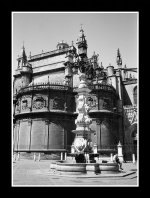JohnP
Member
Hello,
I'm confused by comments I have read regarding contrast.
Somebody wrote that such and such a lens was "too contrasty".
I thought it would be good if a lens could show contrast... different shades, hues.
When is contrast good? When is it bad? When is there too much or too little contrast?
Thanks,
John
I'm confused by comments I have read regarding contrast.
Somebody wrote that such and such a lens was "too contrasty".
I thought it would be good if a lens could show contrast... different shades, hues.
When is contrast good? When is it bad? When is there too much or too little contrast?
Thanks,
John



